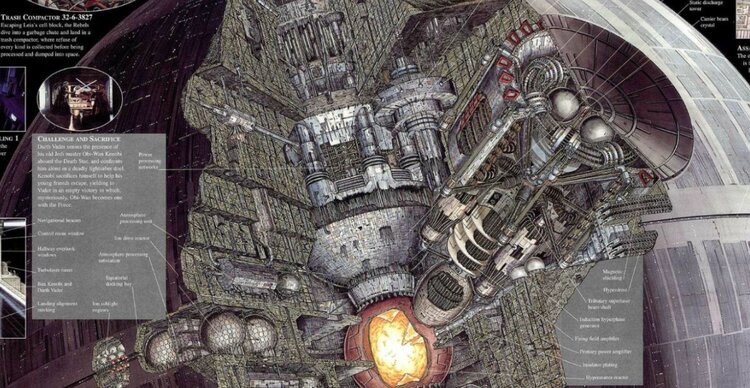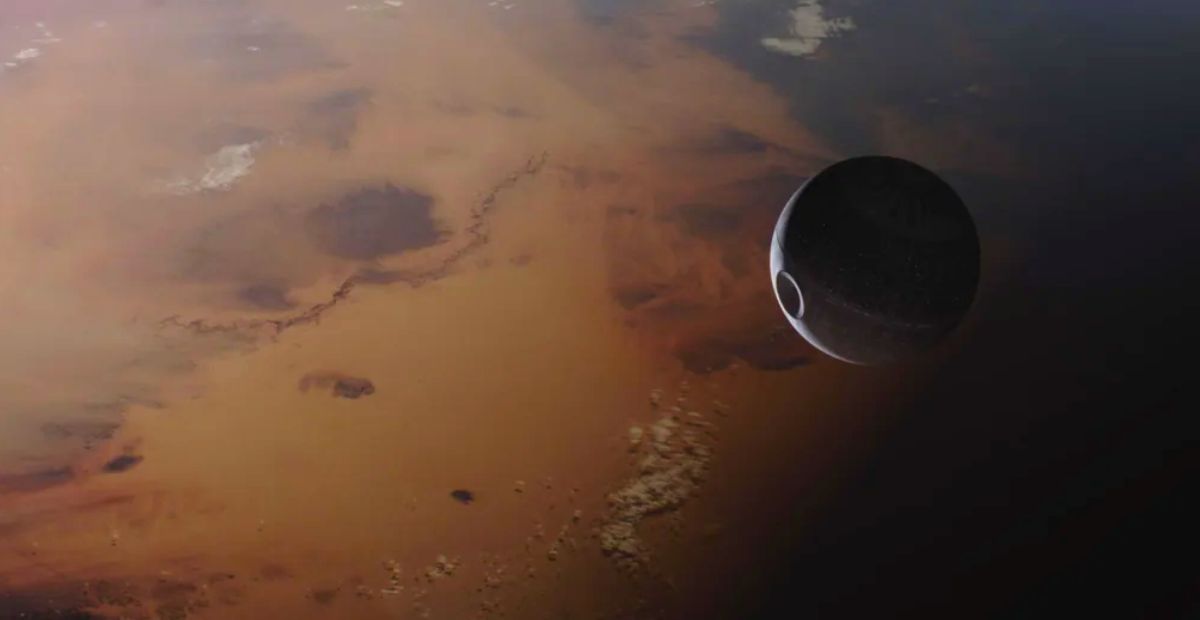We all know the Death Star as one of the most terrifying weapons in the galaxy — a space station the size of a small moon that can wipe out entire planets. But here’s something that’s always made me wonder: how does it even move?
I mean, this thing isn’t sitting in one spot. In A New Hope, it moves from Alderaan to Yavin IV like it’s no big deal. That’s not a short distance — and definitely not something you’d expect from what’s basically a flying city made of metal.
So what kind of power could possibly push something that massive across space? Could it really go to hyperspace like a ship, or was it just slowly drifting between systems?
The Death Star Actually Had Engines and Hyperdrives Built In
What we — or at least what I — used to believe was that the Death Star was basically a planet built by the Empire. So naturally, I thought it must move like one too — orbiting around another planet or star, kind of like how our moon orbits the Earth, and both the moon and Earth orbit around the sun.
But the Death Star is “no moon,” like Ben Kenobi said. It’s a battle station — and yes, it actually has a hyperdrive.
According to the book The Death Star Technical Companion from the old West End Games material, this thing was far more advanced than it looked. The book describes the station as having both ion drives and a network of 123 hyperdrive field generators — meaning the Death Star could move through real space and jump into hyperspace just like any other capital ship.


The reactor that powered all this was buried deep inside the structure, so we never really see the engines in the movies. In fact, what we often assumed were random surface panels and trenches might’ve actually been where the ion output ports were hidden. The book even mentions that “moving the sphere will be accomplished through the use of massive ion sublight drives while in realspace, and through redundant hyperdrive engines for travel from system to system.”
In short, the Death Star moved through normal space using sublight ion drives, and when traveling between star systems, it relied on its hyperdrives.
How the Death Star Actually Pushed Itself Through Space
So, we already know the Death Star had both hyperdrives and sublight drives, but the big question is — how did those systems actually work? Because if you look at other Imperial ships like Star Destroyers, you can clearly see their massive engines burning blue at the back. But with the Death Star, it just looks like a giant metal moon — no visible thrusters or exhaust flames anywhere.
According to the Star Wars Technical Journal (Volume Two), the Death Star’s propulsion systems were built deep inside its equatorial trench — hidden from plain sight. The book describes that “realspace propulsion was handled by an external array of powerful ion engines, which converted the raw fusion energy of the station’s core into thrust and pressed the station’s great mass into any motion dictated by the Death Star’s huge navicomputer banks.”
That means all the “push” came from ion drives buried within the structure, not exposed on the surface. The equatorial trench, the same one we see in A New Hope where the fighters fly during the attack run, actually housed the drive thrusters, heat exhausts, and tractor beam systems all together.
To put it simply, the Death Star’s engines were so large and so dangerous that they couldn’t even be placed on the outer shell. The Technical Journal also adds that the ion engines were extremely radioactive, which is why the crew assigned to monitor them had to wear full radiation suits while working near the vents.

Here’s an exterior diagram from the Star Wars Technical Journal showing where the ion drives were actually located — tucked along the equatorial trench and hidden beneath layers of armor plating.

There’s also a detailed full-color cross section in Star Wars: Incredible Cross Sections that gives us the clearest look yet at how the Death Star actually moved.



